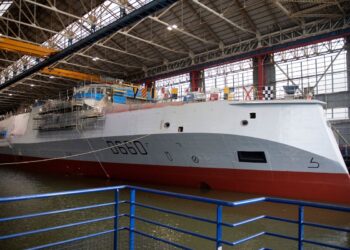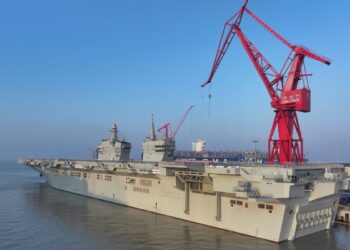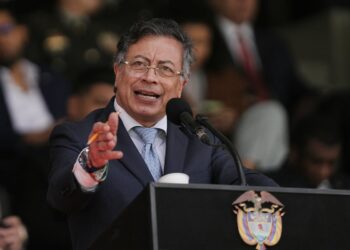BANGKOK — The United States and the Philippines have announced the creation of a joint task force, named Task Force-Philippines, to deter Chinese “coercion” in the South China Sea. U.S. Defense Secretary Pete Hegseth emphasized this initiative during a press conference on October 31, 2023, held at the Association of Southeast Asian Nations defense ministers’ summit in Kuala Lumpur, Malaysia.
This joint task force marks the first of its kind in Southeast Asia and is expected to enhance U.S. and Philippine military cooperation. The Philippines, alongside Brunei, Indonesia, Malaysia, and Vietnam, has overlapping claims in the contested region. The task force aims to enable quicker responses to Chinese vessels in contested waters and enhance interoperability between the two nations’ forces.
The task force will be staffed with approximately 60 members, led by a one-star general or flag officer and will not involve new combat forces or permanent military basing according to the U.S. Pacific Fleet. Hegseth stated, “We don’t seek confrontation, but of course we’re ready to protect our interests, individually and mutually,” underlining the goal of increasing preparedness for any potential crisis.
Rommel Jude Ong, a professor at Ateneo de Manila University, noted that the task force is a result of increasing defense collaboration between the U.S. and the Philippines, which have been defense treaty allies since 1951. He highlighted various developments, including annual military exercises and a recent pact signed in 2024 that allows the sharing of classified military information, as essential precursors for establishing an operational task force.
The formation of this task force is expected to facilitate real-time intelligence sharing, significantly improving response times to incidents in the South China Sea. Previously, operational information had to be relayed between Manila and Hawaii, which was seen as cumbersome. Ong remarked that the presence of the task force in Manila enables faster collaboration on military operations.
Further deterrence against China could involve committing more ships to patrol contested waters, although U.S. Pacific Fleet has ruled out establishing bases in the Philippines. Nonetheless, Ong suggested that the task force may encourage enhanced U.S. logistics in the region.
The geopolitical landscape has shifted under Philippine President Ferdinand Marcos Jr., succeeding Rodrigo Duterte in 2022, who had warmer ties with China. Security analyst Euan Graham noted that the task force could reassure both Washington and Manila of their long-term military commitments, especially with rising tensions around contested shoals in the area.
The establishment of the task force may lead to increased military activity, raising the potential for accidents and heightened tensions. Security analyst Abdul Rahman Yaacob expressed concerns that it could prompt China to escalate its own patrols, making clashes more likely. Nonetheless, Yaacob affirmed that the task force would compel China to reassess its strategic approach concerning the Philippines and Southeast Asia.













